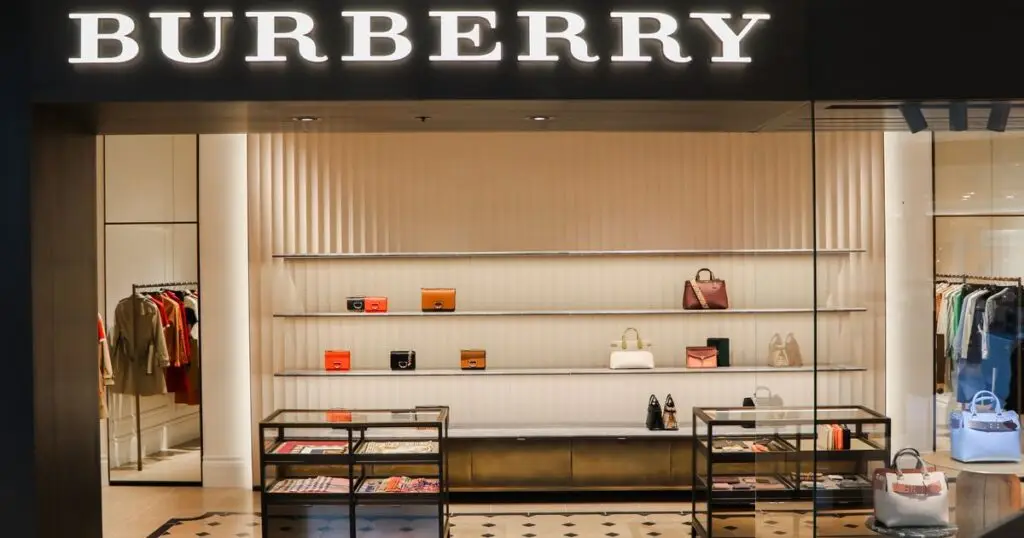Burberry is poised to be relegated from the FTSE 100 in the upcoming quarterly review, with rankings based on market capitalisations as of 2 September. The iconic British luxury fashion brand has witnessed a near 75 per cent plunge in its share price over the past 16 months, marking an unfortunate and somewhat expected downturn. The company’s struggles have been attributed to a challenging macroeconomic environment and the detrimental impact of London’s ‘tourist tax’ amidst a broader decline in luxury retail due to a slowdown in China and the cost-of-living crisis in Western nations.
However, Burberry’s woes are partly of its own making. In comparison, Kering, despite revealing a particularly poor performance for the first half of 2024, has experienced a share price fall of about 50 per cent in the same period.
The brand has suffered from an inconsistent identity amid frequent changes in leadership, each bringing new directions that have shaken investor confidence. Marco Gobbetti, who became CEO in July 2017, was instrumental in stabilising Burberry but his unexpected departure in 2021, followed by CFO Riccardo Tisci and COO Julie Brown, rattled the market. Jonathan Akeyord stepped in as CEO in 2021, with Joshua Schulman being the most recent appointment to the role this year.
Burberry has been grappling with the challenge of maintaining its status as an iconic British luxury brand while trying to resonate with a younger, global demographic. The company’s inconsistency in design and marketing strategies, coupled with an unpopular move away from its signature camel, red, and black check pattern, has not been well-received. Additionally, price increases during the pandemic-era luxury boom have alienated the very aspirational consumers Burberry needs to attract for growth. The brand’s venture into the highly competitive leather goods market also failed to deliver expected results. Reducing prices post-hike is problematic for luxury brands, as it can undermine their premium image. Collectively, these issues suggest that Burberry may be losing direction, a sentiment echoed by concerned investors.
However, this isn’t the first time Burberry has faced significant challenges. In the 2000s, the brand had to overcome issues related to its image and counterfeit products, leading to a comprehensive rebranding initiative. Ana Friedlander, Industry Strategy Director for Fashion at Infor, remains optimistic about Burberry’s future. ‘The efforts to refine product offerings and streamline operations could pave the way for a robust recovery, positioning the company to capitalise on any improved market conditions,’ she commented. ‘The competition from other luxury brands is fierce, so Burberry will need to innovate and adapt to maintain its position. Successful executions of new strategies and a rebound in consumer demand could pave the way for a positive turnaround,’ she added.
However, forecasts by analysts indicate that Burberry’s revenue is expected to decline by five per cent to £2.7bn in the financial year of 2025. The brand’s comparable retail sales are anticipated to fall by 15 per cent in the first quarter of the year, eventually levelling out to a three per cent decrease by the end of 2025. ‘While Burberry’s doing a lot of things right behind the scenes, like investing in products and distribution and even refreshing the management team, its short-term picture remains fraught with real challenges and uncertainty,’ said Aarin Chiekrie, equity analyst at Hargreaves Lansdown. ‘It could be a while yet before sentiment swings and Burberry begins to bloom again,’ noted Chiekrie.
While Burberry is implementing measures to refine its product offerings and streamline operations, the brand faces ongoing challenges and uncertainty. The luxury fashion industry remains highly competitive, requiring Burberry to innovate and adapt continually. A potential rebound in consumer demand and successful strategy execution may lead to a positive turnaround, but short-term forecasts indicate a period of difficulty ahead.


